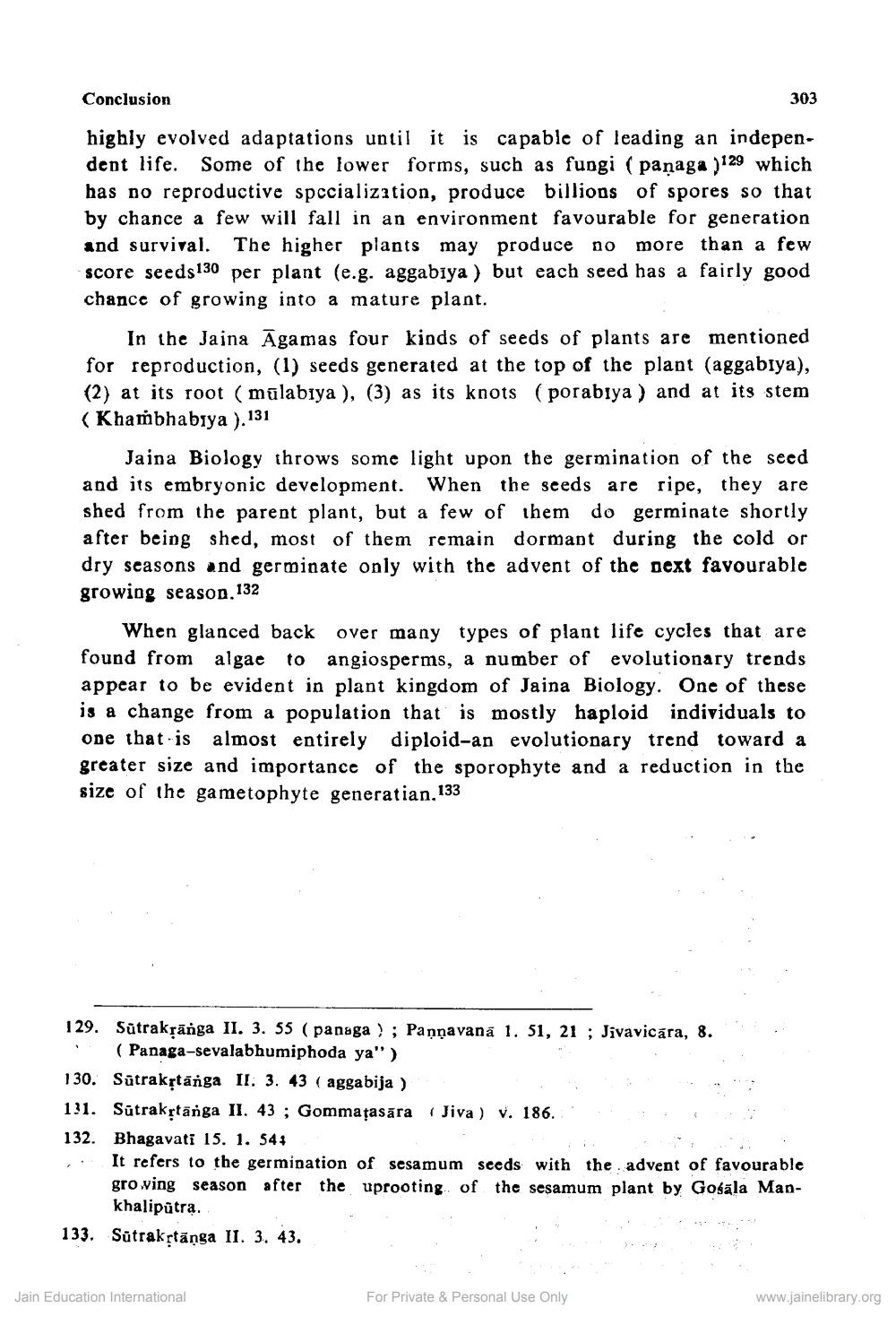________________
Conclusion
highly evolved adaptations until it is capable of leading an independent life. Some of the lower forms, such as fungi (panaga )129 which has no reproductive specialization, produce billions of spores so that by chance a few will fall in an environment favourable for generation and survival. The higher plants may produce no more than a few score seeds 130 per plant (e.g. aggabiya) but each seed has a fairly good chance of growing into a mature plant.
י
In the Jaina Agamas four kinds of seeds of plants are mentioned for reproduction, (1) seeds generated at the top of the plant (aggabiya), (2) at its root (mulabiya), (3) as its knots (porabiya) and at its stem (Khambhabiya ).131
Jaina Biology throws some light upon the germination of the seed and its embryonic development. When the seeds are ripe, they are shed from the parent plant, but a few of them do germinate shortly after being shed, most of them remain dormant during the cold or dry seasons and germinate only with the advent of the next favourable growing season. 132
When glanced back over many types of plant life cycles that are found from algae to angiosperms, a number of evolutionary trends appear to be evident in plant kingdom of Jaina Biology. One of these is a change from a population that is mostly haploid individuals to one that is almost entirely diploid-an evolutionary trend toward a greater size and importance of the sporophyte and a reduction in the size of the gametophyte generatian. 133
129. Sütrakṛänga II. 3. 55 (panaga); Pannavana 1. 51, 21; Jivavicara, 8. (Panaga-sevalabhumiphoda ya")
303
130. Sūtrakṛtänga II. 3. 43 (aggabija)
131. Sūtrakṛtänga II. 43; Gommaṭasara (Jiva) v. 186.
132. Bhagavati 15. 1. 544
It refers to the germination of sesamum seeds with the advent of favourable growing season after the uprooting of the sesamum plant by Gośāla Mankhaliputra.
133. Sūtrakṛtänga II. 3. 43.
Jain Education International
For Private & Personal Use Only
www.jainelibrary.org




